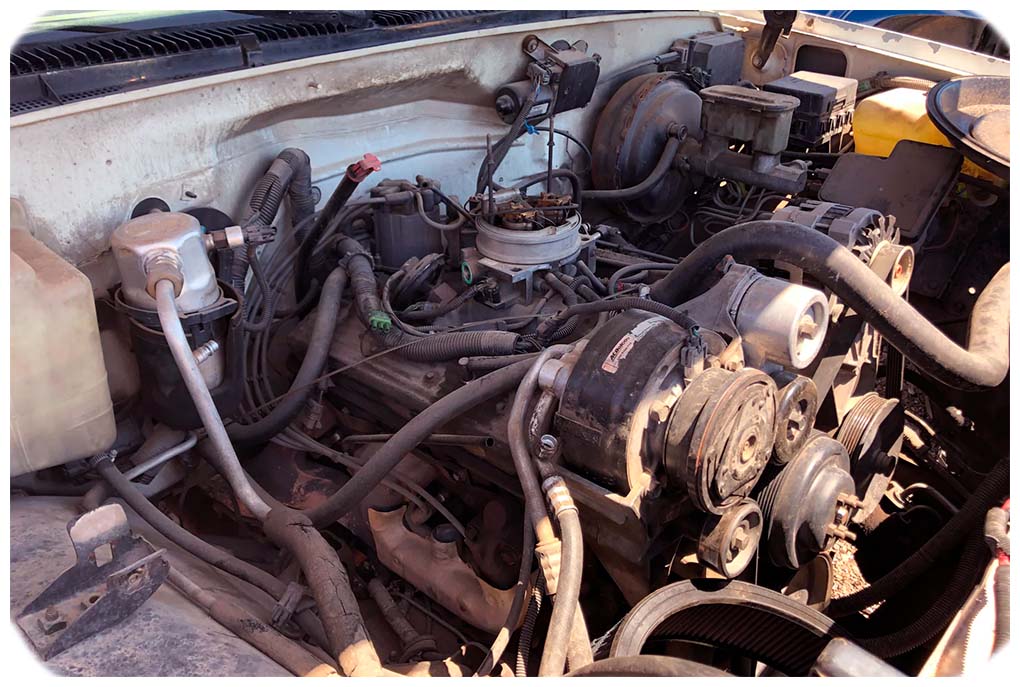A high idle problem is a frustrating issue for car owners with Chevy 350 engines. High or low idle can lead to dangerous driving conditions and cause excessive wear on the engine components, leading to costly repairs. Fortunately, diagnosing and addressing high idle problems with Chevy 350 engines is relatively straightforward. The key is understanding the potential causes of the problem and using appropriate corrective measures to address them.
Diagnosing the Cause of a High Idle Problem with a Chevy 350 Engine
The first step in solving a high idle issue in a Chevy 350 engine is properly diagnosing the source of the problem. This may involve several simple procedures, such as:
-
Check for Vacuum Leaks and Intake Manifold Issues: Start by checking your vehicle’s intake manifold for leaks or damage, which can lead to an abnormally high idle speed. If any signs of damage are apparent, they should be addressed immediately before attempting any further repairs or adjustments. Additionally, check all vacuum hoses connected to your engine for loose connections or cracks that may be causing air leaks which affect your engine’s air/fuel ratio and lead to abnormal idling speeds.
-
Inspect Engine Components for Signs of Damage or Wear: When it comes to diagnosing a high idle problem in a Chevy 350 engine, checking for damaged or worn-out engine components is essential. Look for signs of damage around the spark plugs, fuel injectors, and timing chain. Additionally, check the throttle body and intake manifold gaskets for signs of wear or damage that may be causing a high idle issue. Also see here Best Radiator for Big Block Chevy.
-
Ensure Electrical Connections are Properly Seated and Intact: Finally, make sure all electrical connections are properly seated and intact before attempting any repairs or adjustments to your Chevy 350 engine. Check the connections on the throttle body assembly, idle air control valve (IACV), fuel injectors, mass airflow sensor (MAF), accelerator pedal position sensor (APP), oxygen sensors (O2S), and crankshaft position sensor (CKP).
Making Adjustments to Address Chevy 350 High Idle Problem
Once you have identified which component(s) are causing your Chevy 350’s high idle issue, you can begin making the necessary adjustments:
-
Adjusting the Throttle Linkage or Cable: If a loose throttle linkage or cable is causing your engine to rev excessively at higher speeds due to an increase in airflow, simply adjust the throttle cable or linkage to correct the problem.
-
Adjusting the Throttle Position Sensor (TPS) and IAC Valve: If your engine is consistently idling too high, you may need to adjust the IAC valve and/or throttle position sensor (TPS). The IAC valve is responsible for controlling idle speed and adjusting it can help achieve a smoother idle. Adjusting the TPS can help fine-tune your engine’s fuel/air ratio and ensure an optimal idle speed.
Conclusion
High idle problems in Chevy 350 engines can be frustrating, but they don’t have to be a daunting task. By properly diagnosing the cause of your vehicle’s high idle issue and using corrective measures such as adjusting throttle linkages or cables, throttle position sensors (TPS), or idle air control valves (IACV), you can address most problems quickly and efficiently without having to take your car into a mechanic. With these tips in mind, you should have no trouble solving high idle issues with your Chevy 350 engine!


 Inspect Engine Components for Signs of Damage or Wear: When it comes to diagnosing a high idle problem in a Chevy 350 engine, checking for damaged or worn-out engine components is essential. Look for signs of damage around the spark plugs, fuel injectors, and timing chain. Additionally, check the throttle body and intake manifold gaskets for signs of wear or damage that may be causing a high idle issue. Also see here
Inspect Engine Components for Signs of Damage or Wear: When it comes to diagnosing a high idle problem in a Chevy 350 engine, checking for damaged or worn-out engine components is essential. Look for signs of damage around the spark plugs, fuel injectors, and timing chain. Additionally, check the throttle body and intake manifold gaskets for signs of wear or damage that may be causing a high idle issue. Also see here
Add Comment